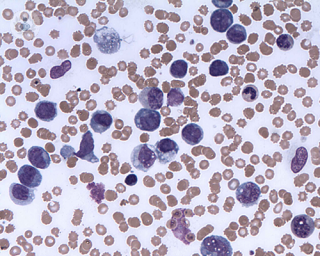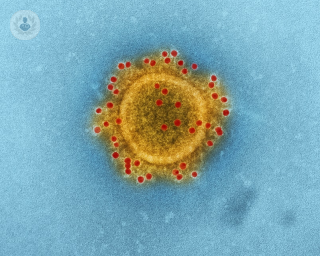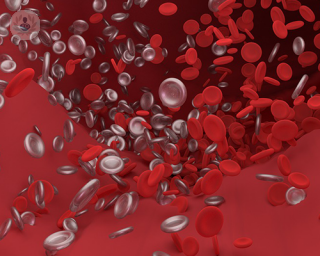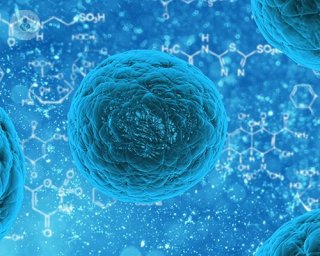Leukaemia
Dr Michael Potter - Haematology
Created on: 03-14-2017
Updated on: 08-21-2023
Edited by: Sophie Kennedy
What is leukaemia?
Leukaemia is a group of cancers of the white blood cells. It usually begins in the bone marrow (the spongy centre of our bones), where blood cells are made.
Normally, stem cells in the bone marrow mature into different sorts of blood cells (red, white and platelets) in a regulated manner. Different types of leukaemia affect the bone marrow in different ways, but all result in a high number of abnormal white blood cells, which are unable to do their job of fighting infections, do not die as they age, and continue to accumulate and replace normal cells.
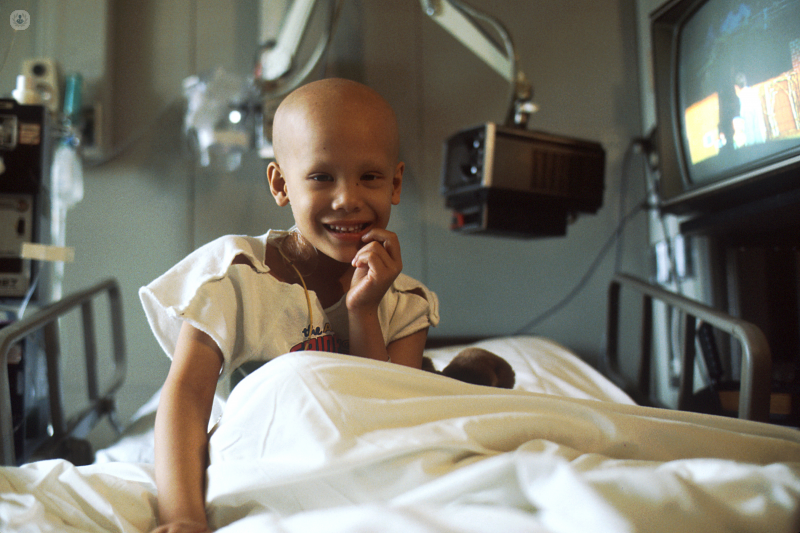
There are several types of leukaemia, including:
- Acute myeloid leukaemia
- Chronic myeloid leukaemia
- Acute lymphoblastic leukaemia (ALL) – the most common form of leukaemia in children
- Chronic lymphocytic leukaemia (CLL)
- Hairy cell leukaemia
What are the symptoms of leukaemia?
Symptoms of leukaemia are vague and non-specific, meaning that tests run by a doctor are needed to make a diagnosis. Symptoms tend to be caused by the lack of healthy blood cells as the cancerous cells overcrowd the bone marrow, hampering cell production, including production of red blood cells (RBCs), which, in turn, leads to symptoms of anaemia.
Typical symptoms include:
- Frequent, long-lasting, and/or severe infections – the reduced number of healthy white cells cannot fight diseases as effectively.
- Fatigue, weakness, getting out of breath easily – signs of anaemia
- Fever
- Malaise
- Bleeding and bruising easily – this is due to a shortage of platelets, which are responsible for clotting.
Causes of leukaemia
In the majority of cases, the cause of leukaemia is unknown. What is clear is that it is not contagious.
Potential risk factors include:
- Age – most types of leukaemia affect elderly people more than anyone else, while ALL affects mainly children.
- Gender – leukaemia is more common on males than females.
- Genetics – there is a slightly higher risk of leukaemia if there is a family history of the condition.
- Exposure to chemicals
- Exposure to radiation
- Bone marrow disorders, such as myelodysplastic syndrome (MDS) and the myeloproliferative neoplasms (MPN) seem to predispose patients to certain forms of leukaemia.
Can it be prevented?
Currently there is no way to prevent leukaemia, but avoiding exposure to toxic substances and radiation can help to minimise the risk.
What is the treatment for leukaemia?
The basic treatment for leukaemia is chemotherapy, a procedure in which drugs used to destroy cancer cells are injected. Chemotherapy is usually given in blocks or cycles, with breaks in between in allow healthy cells to recover.
Other therapies that may be used, depending on the nature of the case include:
- Radiotherapy
- Biological therapy
- Stem cell transplant
- Targeted drug therapy

